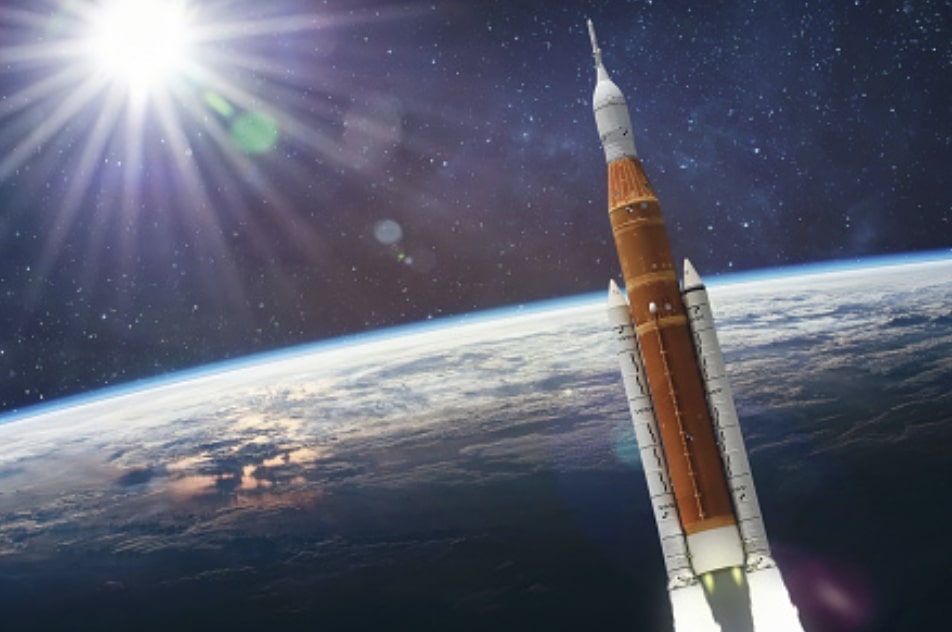As we prepare to revisit the surface of the Moon with the Artemis missions, the promise of human interplanetary exploration looms brighter than it has in more than a generation. Earlier this year, NASA released a set of high-level objectives identifying 50 points of focus for the next 20 years of space exploration. The prime goal is putting humans on the surface of Mars. The agency requested feedback from the scientific community and the general public so as to ensure that they have a widely accepted plan for this critical mission.
Each preliminary objective in the report falls under four comprehensive space exploration categories: transportation and habitation, lunar and martian infrastructure, operations, and science. In this article, we’ll look at the first twelve objectives and their potential role in developing intelligent, effective modes of transportation and habitation as we journey to the Moon, Mars – and beyond.
Getting There and Back
According to NASA, the overarching goal of the Transportation and Habitation Objectives is to “develop and demonstrate an integrated system of systems to conduct a campaign of human missions to the Moon and Mars, living and working on the lunar and Martian surface, and a safe return to Earth.”
Nailing down the logistics of impending interplanetary journeys is a crucial first step – as is ensuring a safe journey to and from one’s destination. Astronauts must be able to effectively conduct mission operations so as to transport humans and their equipment from one world to another.
According to NASA, objectives that focus specifically on transportation include:
- “TH-1: Develop cislunar systems that crew can routinely operate to lunar orbit and lunar surface for extended durations.
- TH-2: Develop operations that can routinely deliver large surface elements to the lunar surface.
- TH-5: Develop a transportation system that crew can routinely operate from the Earth-moon vicinity to Mars orbit and Martian surface.
- TH-6: Develop a transportation system to deliver large surface elements from Earth to the Martian surface.
- TH-11 & TH-12: Develop systems capable of returning large cargo mass from the Lunar and Martian surface to the Earth, including the capabilities necessary to meet scientific sample return objectives.”
Living, Breathing and Groundbreaking
Another vital component of the Transportation and Habitation set of objectives focuses on life support during these trips as well as supporting human operations on the surface of the Moon and Mars. Related objectives include:
- “TH-3: Develop systems to allow crew to live and operate safely on the Lunar surface and Lunar orbit for extended periods with scalability to continuous presence to visit areas of interest for scientific research, conduct Mars analog activities, support industrial utilization, and conduct utilization activities.
- TH-4: Develop a habitation system for crew in deep space for extended durations, enabling future missions to Mars.
- TH-7: Develop systems for crew to live, operate, and explore on the Martian surface to address key questions with respect to science and resources.
- TH-8: Develop a system that monitors crew health and performance and provides medical care to the crew during long communication delays to Earth and in an environment that does not allow emergency evacuation or terrestrial medical assistance.
- TH-9 & TH-10: Develop integrated human and robotic systems with inter-relationships that enable maximum science return from the Lunar/Mars surface and Lunar/Mars orbit.”
A Lunar Stepping Stone
The Artemis Program has two main goals – returning humans to the Moon to conduct science-based exploration. This exploration will have the dual purpose of learning how to operate on the surface of another world for prolonged periods so as to prepare for human trips to Mars.
Next, we’ll discuss the objectives that tackle installing and maintaining human infrastructure on the Moon and Mars. After all, what’s the point of making the trip if you can’t stay a while?






